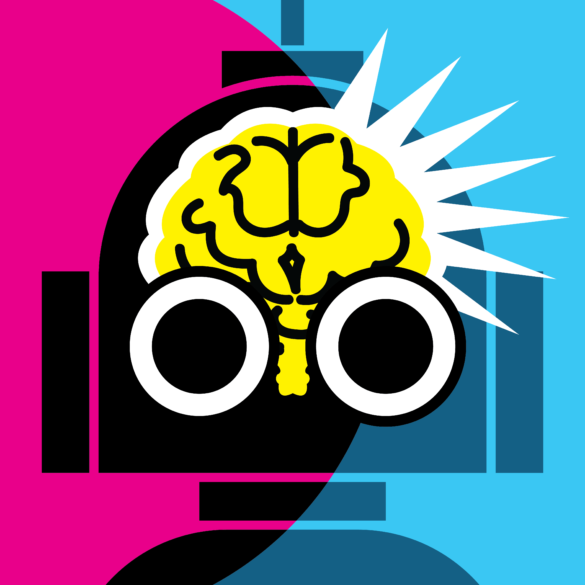When artificial intelligence (AI) was coined in the 1950s to explore topics like problem solving and symbolic methods, no one expected it to be able to generate clear photos from descriptions and perform human-like tasks one day.
That day is today.
With its recent new improvements, the topic of AI has been rushing over the world. The capabilities of AI have continued to shock society, and while some might find it intriguing or helpful, others fear what it could mean for the future.
Ball State University senior web development and maintenance specialist Mark Whitney explained that AI analyzes compiled data to give humans the answers they’re seeking.
According to Colorado State University Global, AI allows machines and computer applications to mimic human intelligence by combining large sets of data with complex processing algorithms. To put it simply, AI runs on copious amounts of human-generated data to do things quickly that often take humans hours.
“Pattern matching is what it does really well,” Whitney says. “Computers have always been good at organizing and sorting things, … and AI has gotten to the point where it’s just really better.”
Our World in Data explains AI has been developing for seven decades. In 1998, AI systems could recognize handwriting and speech. Now, it also has the ability to recognize images, comprehend readings, and understand languages.
There are fears of AI becoming sentient and developing its own emotions. Whitney says he doesn’t want anyone to believe that AI can think for itself. It doesn’t work unless humans control it.
Throughout his years in computer work, Whitney has seen many technologies come and go, so much so that he takes new ones with “a grain of salt.” With each new, unique technology Whitney has experienced, one thing remains the same: people fear them. He was not shocked to find out that the same applies for AI.
At one point in time, trains, phones, television, Wi-Fi, video games, and robots were all new technological advances that, according to TechRadar, scared the world senseless. However, those technologies are now used without a second guess.
Freshman computer science major Keegan Fontaine believes that in a few years, AI will be integrated into society in an unpredictable way.

“I think it’d be similar to the internet, or something like that, where the internet has, since the ‘90s, become massive,” Keegan says.
Keegan’s interest in AI stems from reading about it in science fiction books as a child. However, he says the recent popularity of AI is what brought him back to the idea of studying it.
At Ball State, computer science majors with a concentration in data analytics and machine learning are taught to use AI to study large amounts of data. Keegan has yet to apply AI in his classes because most of the entry-level computer science classes consider the use of AI as cheating. He finds this to be “kind of strange” as AI is used frequently in the computer science industry, and he says using it in class would be good hands-on experience.
“I think it’s a great learning tool,” Keegan says. “It can be super helpful in actually teaching you things or rephrasing something, so you can understand it better.”
Keegan has played around with AI in his personal time to teach himself the basics of data science. He’s used it in his own personal projects and to debug codes.
Despite AI being a tool for computer scientists, a large gray area exists on whether it should be used to write essays or create art. Because AI works based on existing data, it uses art and essays that have already been made and released on the internet to generate new art and essays. This creates the question of whether AI should be considered plagiarism or a copyright violation.
Companies have taken advantage of this gray area, and The New York Times is now suing OpenAI and Microsoft for scanning their articles.
“If people write the correct prompts, they can basically get the AI to regenerate news articles that way they can avoid paying for The New York Times to get the same news,” Whitney says.
With AI creating a buzz of anxiety in the world, many people are wondering what the future will look like if AI continues to grow. Whitney says AI will go through the same cycle that other popular innovations go through. A cycle that was coined as the Hype Cycle by Gartner, an American technological research and consulting firm that conducts research on technology.
The cycle states there are five key phases of a technology’s life cycle where essentially a technological innovation is created, and it becomes extremely popular until its popularity plateaus.
“I think right now AI is at the top of that hype cycle,” Whitney says. “There’s going to be a drop off, but eventually it’s going to even out, and we’re going to use it for some things that are useful.”
Some states are already testing AI’s ability to be useful and possibly integrated into daily life. The Washington State Department of Natural Resources is using AI technology through cameras, satellites, and other data feeds to find early signs of wildfires, so they can be attacked as soon as they start.
Despite the beneficial qualities of AI, Keegan says issues surrounding AI are inevitable but will be figured out as time goes on.
“I don’t think it’s going to go away,” Keegan says. “I think the cat’s out of the bag.”
Sources: Harvard University, Colorado State University Global, Our World in Data, TechRadar, Ball State Department of Science, The New York Times, Gartner, Washington State Department of Natural Resources




